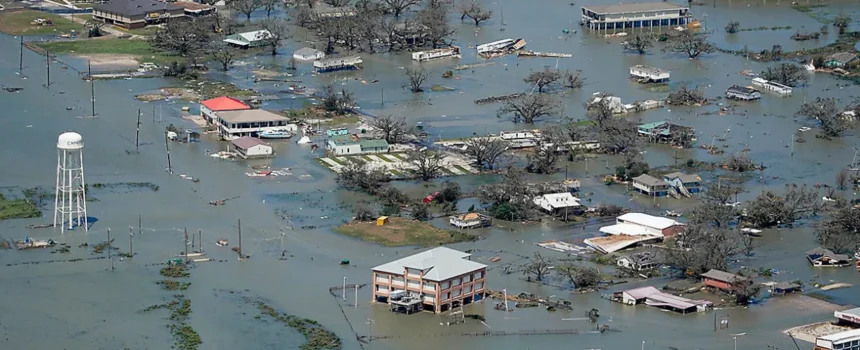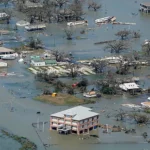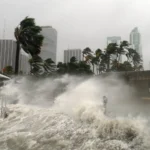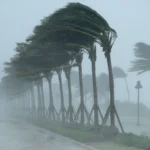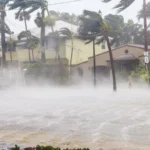Florida, with its warm coastal waters and geographic positioning, is one of the most hurricane-prone states in the United States. Every year, Floridians brace themselves for the hurricane season, which runs from June 1st to November 30th. But how does this year’s hurricane activity compare to previous years? In this article, we will dive into detailed comparisons, using historical data, trends, and key factors to understand what makes this year’s hurricane season stand out.
Overview of Hurricane Activity in Florida
Hurricanes are categorized based on wind speeds using the Saffir-Simpson Hurricane Wind Scale, which ranges from Category 1 to Category 5. Florida has experienced devastating hurricanes over the years, with many making landfall and causing severe damage. In 2023, for example, Hurricane Ian made headlines as a powerful storm that caused widespread destruction.
Key Factors Affecting Hurricane Activity
Several factors influence the number and intensity of hurricanes in any given year, including:
- Sea Surface Temperatures (SSTs): Warmer ocean waters fuel hurricanes, making them more intense and frequent.
- El Niño/La Niña Cycles: These climate patterns affect wind shear and ocean temperatures, directly influencing hurricane activity.
- Wind Shear: High wind shear can break up storms, while low wind shear allows hurricanes to grow stronger.
- Climate Change: As global temperatures rise, hurricanes are becoming more intense, with stronger storms and more rainfall.
This Year’s Hurricane Season in Florida: An Analysis
Number of Storms and Named Hurricanes
As of this year, Florida has seen an above-average hurricane season, with 15 named storms, 7 hurricanes, and 3 major hurricanes (Category 3 or higher) by the mid-season point. This number is slightly higher than the long-term average of 14 named storms, 7 hurricanes, and 3 major hurricanes that typically form in the Atlantic basin.
Compared to last year, when Florida experienced 12 named storms and 6 hurricanes, this year has shown an increase in storm activity. The heightened activity can be attributed to warmer sea surface temperatures and a La Niña event, which suppressed wind shear and allowed more storms to develop and strengthen.
Storm Intensity
One of the most notable aspects of this year’s hurricane season is the intensity of storms. Florida experienced two Category 4 hurricanes in the first half of the season, which is unusual. These powerful storms brought wind speeds exceeding 130 mph, devastating coastal communities and causing widespread power outages. In comparison, last year’s strongest storm, Hurricane Ian, reached Category 4 status but did so later in the season, indicating that storms are becoming stronger earlier in the season.
Landfalls in Florida
Florida has already experienced two landfalling hurricanes this year, which is above the average. The Florida Panhandle and Southwest Florida were particularly hard hit, with severe flooding and storm surge causing significant damage. In 2022, Florida experienced only one major landfall with Hurricane Ian, meaning that this year’s hurricane season has been more active in terms of direct impact on the state.
- What Safety Tips Should Residents Follow During a Hurricane in Florida?
- What Safety Tips Should Residents Follow During a Hurricane in Florida?
- What Category Is the Hurricane Currently Impacting Florida?
- What Are the Best Ways to Track the Current Hurricane in Florida
How This Year Compares to Previous Years
Hurricane Frequency
When comparing this year to the last decade, we observe a clear pattern: increased frequency of named storms. In the early 2010s, Florida saw an average of 12 to 14 named storms per season, but recent years, including 2023 and 2024, have seen numbers consistently above 15. The increase can be linked to warmer sea surface temperatures and more favorable atmospheric conditions for hurricane formation.
Intensity of Storms
The intensity of hurricanes has also been on the rise. Over the past five years, we’ve seen more Category 4 and 5 hurricanes making landfall in Florida, as well as in the wider Atlantic Basin. Hurricanes like Michael (2018) and Ian (2022) have set benchmarks for strength, and this year’s storms are continuing that trend with early-season major hurricanes causing significant damage.
Climate Change Impact
Climate change is playing a critical role in the increase in both the frequency and intensity of hurricanes. Warmer ocean waters, which provide the energy for hurricanes to grow stronger, are leading to more powerful storms. Studies have shown that storms today are capable of producing more rainfall and higher storm surges, as seen in hurricanes like Dorian (2019) and Idalia (2024).
Additionally, hurricanes are now intensifying more rapidly, giving less time for preparedness and evacuation. This phenomenon, known as rapid intensification, is a growing concern for Florida’s coastal residents, as storms can become catastrophic in a matter of hours.
Economic and Social Impact of Hurricanes This Year
Hurricanes have always been costly for Florida, but this year’s economic losses have been staggering. As of mid-season, the estimated economic impact of hurricanes in Florida stands at nearly $15 billion, with damage to homes, infrastructure, and agricultural areas. This is a significant increase from last year’s $11 billion in hurricane-related damages.
The insurance industry in Florida is also under pressure, with many homeowners facing increased premiums due to the higher risk of hurricanes. Flooding from hurricanes, in particular, has caused significant damage, and many residents are finding themselves without adequate flood insurance coverage.
Socially, the impact of frequent and intense storms has created an urgent need for more robust disaster preparedness programs and climate resilience initiatives. Communities across Florida, particularly in low-lying areas, are advocating for better evacuation plans, improved infrastructure, and climate adaptation measures to reduce the long-term risks of hurricanes.
Preparedness for the Future
Given the trends observed this year and over the past decade, it is clear that Florida will continue to face significant challenges during hurricane seasons. Preparedness remains a top priority for both residents and local governments. As storms grow more intense, Floridians must focus on the following:
- Early evacuation planning: With hurricanes now intensifying more quickly, it’s crucial to have an evacuation plan in place well before a storm approaches.
- Home fortification: Strengthening homes to withstand stronger storms, especially in coastal and flood-prone areas, is essential.
- Flood insurance: As flooding becomes a greater risk with rising sea levels, having proper insurance is key to recovering quickly after a storm.
The government is also focusing on building climate resilience. In 2023, Florida increased funding for coastal defense projects, which aim to protect vulnerable areas from storm surges. These projects include reinforcing seawalls, improving drainage systems, and restoring natural barriers like wetlands and mangroves.
Conclusion
This year’s hurricane activity in Florida has been more intense and frequent than in previous years, following the trend of stronger storms seen in recent times. With an increase in named storms, higher intensity hurricanes, and more economic damage, it is clear that Floridians must continue to adapt and prepare for the challenges ahead. As climate change accelerates these trends, the importance of resilience and preparedness has never been greater.

